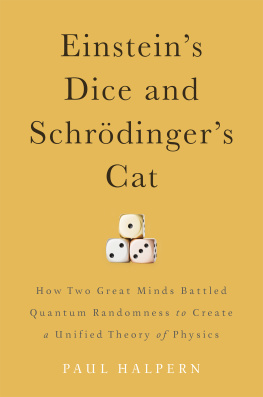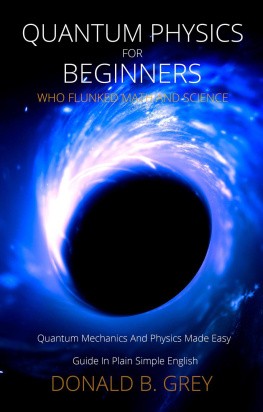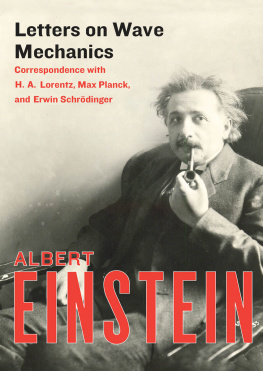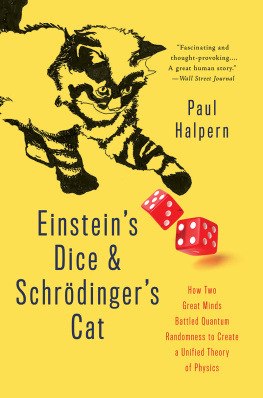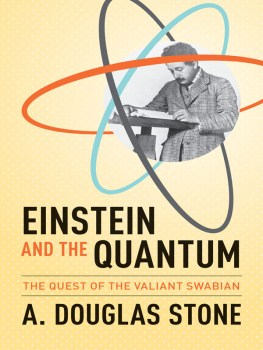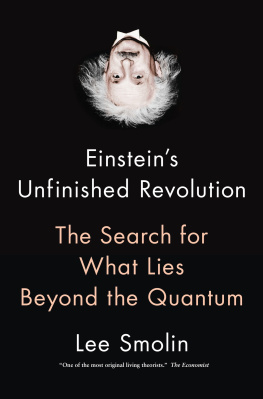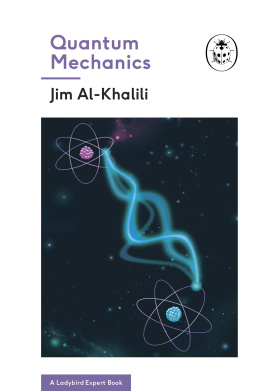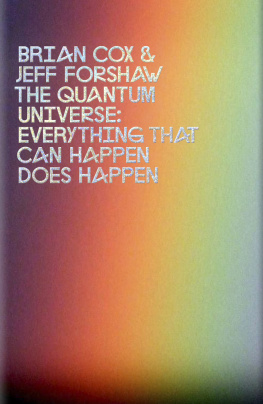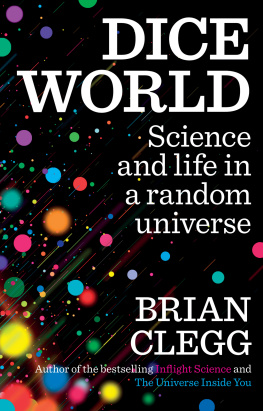How Two Great Minds Battled Quantum Randomness to Create a Unified Theory of Physics

A Member of the Perseus Books Group New York
Copyright 2015 by Paul Halpern
Published by Basic Books,A Member of the Perseus Books Group
All rights reserved. Printed in the United States of America. No part of this book may be reproduced in any manner whatsoever without written permission except in the case of brief quotations embodied in critical articles and reviews. For information, address Basic Books, 250 West 57th Street, New York, NY 10107.
Books published by Basic Books are available at special discounts for bulk purchases in the United States by corporations, institutions, and other organizations. For more information, please contact the Special Markets Department at the Perseus Books Group, 2300 Chestnut Street, Suite 200, Philadelphia, PA 19103, or call (800) 810-4145, ext. 5000, or e-mail .
Designed by Pauline Brown
Library of Congress Cataloging-in-Publication Data
Halpern, Paul, 1961
Einsteins dice and Schrdingers cat : how two great minds battled quantum randomness to create a unified theory of physics / Paul Halpern, PhD.
pages cm
Includes bibliographical references and index.
ISBN 978-0-465-04065-0 (e-book) 1. Quantum chaos. 2. Quantum theoryPhilosophy. 3. PhysicsPhilosophy. 4. Unified field theories. 5. Einstein, Albert, 18791955. 6. Schrdinger, Erwin, 18871961. I. Title.
QC174.17.C45H35 2015
530.13'3dc23
2014041325
10 9 8 7 6 5 4 3 2 1
Dedicated to the memory of Max Dresden, my PhD advisor, whose passion for the history of twentieth-century physics was truly inspiring
Well who am I? (This question is meant in general, the I not referring just to the present writer.) The Image of God, gifted with power of thought to try and understand His world. However naive my attempt at this may be, I do have to value it higher than scrutinizing Nature for the purpose of inventing a device to... say, avoid splashing my spectacles in eating a grapefruit, or other very handy conveniences of life.
Erwin Schrdinger, The New Field Theory
Contents
I would like to acknowledge the outstanding support of my family, friends, and colleagues in helping me see this project to completion. Thanks to the faculty and staff of the University of the Sciences, including Helen Giles-Gee, Heidi Anderson, Suzanne Murphy, Elia Eschenazi, Kevin Murphy, Brian Kirschner, and Jim Cummings, and to my colleagues in the Department of Math, Physics, and Statistics and the Department of Humanities, for supporting my research and writing. I am grateful for the camaraderie of the history of science community, including the APS Forum on the History of Physics, the Philadelphia Area Center for History of Science, and the AIP Center for History of Physics. The warm support of the Philadelphia Science Writers Association, including Greg Lester, Michal Mayer, Faye Flam, Dave Goldberg, Mark Wolverton, Brian Siano, and Neil Gussman, is most appreciated. Thanks to historians of science David C. Cassidy, Diana Buchwald, Tilman Sauer, Daniel Siegel, Catherine Westfall, Robert Crease, and Peter Pesic for useful suggestions and to Don Howard for offering helpful references. I greatly appreciate the help of Schrdingers family, including Leonhard, Arnulf, and Ruth Braunizer, in addressing questions about his life and work. Im grateful to musician Roland Orzabal and philosopher Hilary Putnam for kindly answering questions about their work. Thanks to science writer Michael Gross for his friendly advice on German culture and language. I appreciate the encouragement of David Zitarelli, Robert Jantzen, Linda Dalrymple Henderson, Roger Stuewer, Lisa Tenzin-Dolma, Jen Govey, Cheryl Stringall, Tony Lowe, Michael LaBossiere, Peter D. Smith, Antony Ryan, David Bood, Michael Erlich, Fred Schuepfer, Pam Quick, Carolyn Brodbeck, Marlon Fuentes, Simone Zelitch, Doug Buchholz, Linda Holtzman, Mark Singer, Jeff Shuben, Jude Kuchinsky, Kris Olson, Meg and Woody Carsky-Wilson, Carie Nguyen, Lindsey Poole, Greg Smith, Joseph Maguire, Doug DiCarlo, Patrick Pham, and Vance Lehmkuhl. I offer my sincere appreciation to Ronan and Joe Mehigan for their photographs of Schrdinger locations in Dublin. Thanks to the Princeton University Library Manuscripts Division for permission to peruse the Albert Einstein Duplicate Archives and other research materials and to the American Philosophical Society Library for access to the Archive for the History of Quantum Physics. Many thanks to Barbara Wolff and the Albert Einstein Archives in Jerusalem for reviewing my quotes from Einsteins correspondence to Schrdinger. Thanks to the Royal Irish Academy for information about their proceedings. I thank the John Simon Guggenheim Foundation for a 2002 fellowship, during which I first encountered the Einstein-Schrdinger correspondence.
Thanks to my editor, T. J. Kelleher, for his outstanding guidance and useful suggestions, and to the staff of Basic Books, including Collin Tracy, Quynh Do, Betsy DeJesu, and Sue Warga, for their help. I thank my marvelous agent, Giles Anderson, for his enthusiastic support.
Special thanks to my wife, Felicia; my sons, Eli and Aden; my parents, Bernice and Stanley Halpern; my in-laws, Arlene and Joseph Finston; Richard, Anita, Jake, Emily, Alan, Beth, Tessa, and Ken Halpern; Aaron Stanbro; Lane and Jill Hurewitz; Shara Evans; and other family members for all their love, patience, advice, and support.
T his is the tale of two brilliant physicists, the 1947 media war that tore apart their decades-long friendship, and the fragile nature of scientific collaboration and discovery.
When they were pitted against each other, each scientist was a Nobel laureate, well into middle age, and certainly past the peak of his major work. Yet the international press largely had a different story to tell. It was a familiar narrative of a seasoned fighter still going strong versus an upstart contender hungry to seize the trophy. While Albert Einstein was extraordinarily famous, his every pronouncement covered by the media, relatively few readers were conversant with the work of Austrian physicist Erwin Schrdinger.
Those following Einsteins career knew that he been working for decades on a unified field theory. He hoped to extend the work of nineteenth-century British physicist James Clerk Maxwell in uniting the forces of nature through a simple set of equations. Maxwell had provided a unified explanation for electricity and magnetism, called electromagnetic fields, and identified them as light waves. Einsteins own general theory of relativity described gravity as a warping of the geometry of space and time. Confirmation of the theory had won him fame. However, he didnt want to stop there. His dream was to incorporate Maxwells results into an extended form of general relativity and thereby unite electromagnetism with gravity.
Every few years, Einstein had announced a unified theory to great fanfare, only to have it quietly fail and be replaced by another. Starting in the late 1920s, one of his primary goals was a deterministic alternative to probabilistic quantum theory, as developed by Niels Bohr, Werner Heisenberg, Max Born, and others. Although he realized that quantum theory was experimentally successful, he judged it incomplete. In his heart he felt that God did not play dice, as he put it, couching the issue in terms of what an ideal mechanistic creation would be like. By God he meant the deity described by seventeenth-century Dutch philosopher Baruch Spinoza: an emblem of the best possible natural order. Spinoza had argued that God, synonymous with nature, was immutable and eternal, leaving no room for chance. Agreeing with Spinoza, Einstein sought the invariant rules governing natures mechanisms. He was absolutely determined to prove that the world was absolutely determined.

